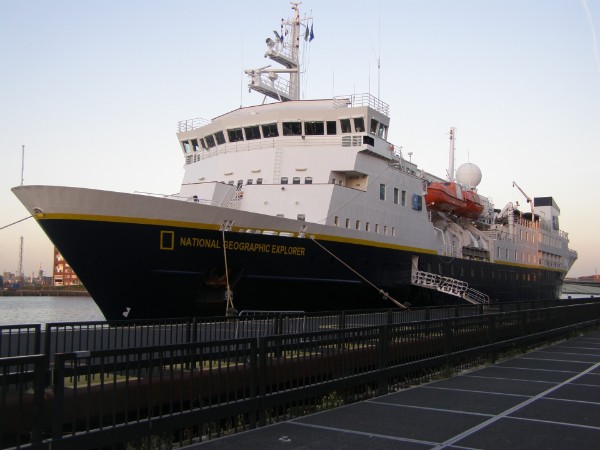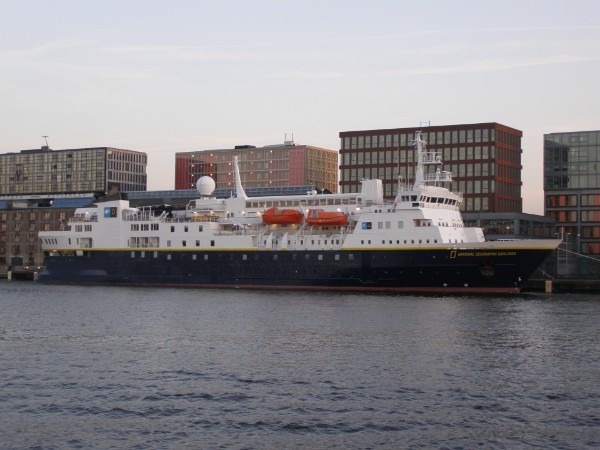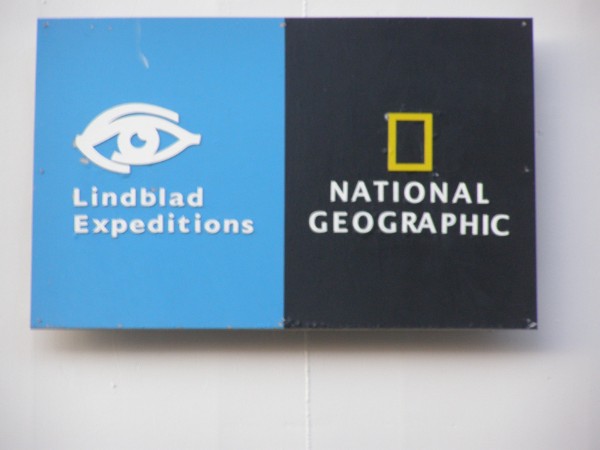National Geographic Explorer

National Geographic Explorer as seen berthed in Amsterdam during her first visit to the Dutch capital at the 28th of september 2011.
National Geographic Explorer was originally built as the Hurtig Ruten ship Midnatsol, meaning 'the midnight sun', that shines over the northpole. The ship was delivered from the Ulstein Hatlo Yard at Ulsteinvik, Norway and she had been built under yardnumber 176. She has a lenght of 108,60 meters, a width of 16,5 meters and a draft of 4,6 meters. She sails with 148 passengers, who are taken care of by 34 crewmembers. Her tonnage is measured at 6471 tons. The normal speed of the ship is around 17,5 knots and she flies the flag of the Bahamas.
The ship was launched at the 22nd of may 1982 and delivered to Hurtig Ruten company TFDS at the 26th of november of that same year. She replaced a ship with the same name, that had been built in 1949. In fact she was the thirth ship under the name Midnatsol, the company had the first Midnatsol delivered in 1910. The new Midnatsol took up the normal Hurtig Ruten sailings along the coast of Norway as a passenger and cargo ship and was rebuilt with a pre-fabricated passenger accomodation over the rear cargo deck in 1988. This rebuilding was done in Bremerhaven at the Motorenwerk wharf.
When the new Midnatsol was delivered to the Hurtig Ruten in 2003, our subject was renamed Midnatsol II and laid-up. It was planned to sell her to a Canadian company, but this did not happen and instead of the costly lay-up, Hurtig Ruten brought the ship back in service under the name Lyngen from the winterseason of 2005/2006 onwards. In the summermonths of 2006, the ship was used as a hotelship for the Snohvit gas plant in Norway, docked at Melkoya in Hammerfest in the far north of the country. In october 2007, the ship was sold, this time to Lindblad Expeditions, a company sailing expedition cruises to several parts of the world. Because Lindblad works closely together with National Geographic, the ship was named National Geographic Explorer and after a lenghty refit she started sailing for Lindblad from the summer of 2008 onwards. She is by far the largest ship within the fleet of Lindblad, the second largest ship is the National Geographic Endeavour, measuring 3132 tons.

The ship officially recieved her new name for Lindblad Expeditions when she was christened at the 6th of august 2008, before she set sail on her maiden cruise for the company. For her Lindblad passengers, the ship offers kayaks and a fleet of Zodiacs, that are motorized rafts. Also, there is video equipment available to explore the world under water. For a ship of her size, she also offers a good amount of public rooms, including a lounge and a bar, a spa, fitness center and a sauna. Of course, an expedition ship also offers a good filled library and a full-time doctor and wellness specialist. Several dining options offer mostly specialities from the regions the ship sails in, made with ingretients that are bought in locally.
Below, you can see the combined logo's of the National Geographic Society and Lindblad Expeditions, showing their close connection.


